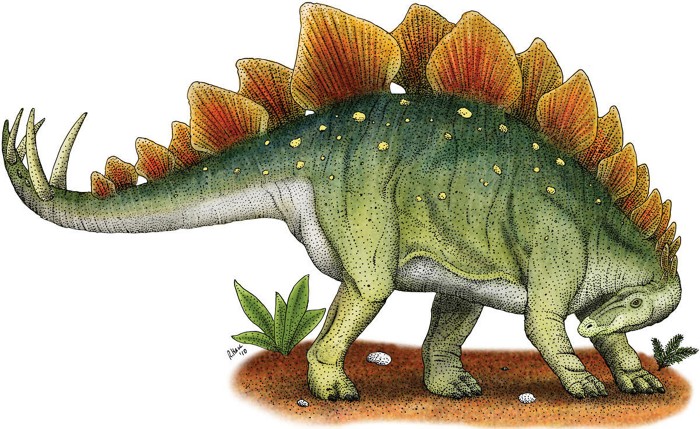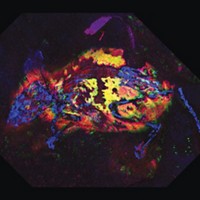Advertisement
Grab your lab coat. Let's get started
Welcome!
Welcome!
Create an account below to get 6 C&EN articles per month, receive newsletters and more - all free.
It seems this is your first time logging in online. Please enter the following information to continue.
As an ACS member you automatically get access to this site. All we need is few more details to create your reading experience.
Not you? Sign in with a different account.
Not you? Sign in with a different account.
ERROR 1
ERROR 1
ERROR 2
ERROR 2
ERROR 2
ERROR 2
ERROR 2
Password and Confirm password must match.
If you have an ACS member number, please enter it here so we can link this account to your membership. (optional)
ERROR 2
ACS values your privacy. By submitting your information, you are gaining access to C&EN and subscribing to our weekly newsletter. We use the information you provide to make your reading experience better, and we will never sell your data to third party members.
Biomarkers
Fossil biomolecules provide insights into which dinosaurs were warm- or cold-blooded
Spectroscopy reveals clues to dinos’ metabolisms
by Carolyn Wilke, special to C&EN
June 7, 2022
| A version of this story appeared in
Volume 100, Issue 21

People once assumed that dinosaurs were cold-blooded reptiles. That understanding has morphed over the last 50 years or so, and we now think many dinosaurs were warm-blooded and birdlike. New research offers nuance to the picture. Using fossilized biomolecules, researchers have determined that some dinosaurs were warm- and others cold-blooded (Nature, DOI: 10.1038/s41586-022-04770-6). The scientists’ estimates of dinosaurs’ metabolic rates also give insights into the likely lifestyles of certain dinosaurs.
Finding metabolic rates for living animals is easy. We can put a hamster on a treadmill and measure how much oxygen it breathes relative to its body mass for a given unit of time, says Jasmina Wiemann, a molecular paleobiologist at the California Institute of Technology. “We can’t do this with a Tyrannosaurus Rex.” The solution, she says, was to look for metabolic markers in fossils.
The oxidation reactions that produce energy and body heat also create reactive oxygen species. Those metabolic by-products kick off a chain of chemical reactions, cross-linking certain molecules and forming compounds such as thioethers and N- and S- heterocycles that precipitate in tissues, including bone.
Using Fourier-transform infrared and Raman spectroscopy, Wiemann and her colleagues looked for these N- and S- crosslinks in the bones of animals alive today, such as an iguana and puma, and in eight fossils from animals, including a marsupial and a cetacean, with close living relatives whose metabolic rates were known and used as a proxy for those of the fossils. The number of these cross-links scaled with the metabolic rate for both fossil and bone samples. That signal survives well in deep time, says Wiemann, who did this work while at Yale University.
“Once the authors worked out this relationship in modern species, it’s very easy to apply to lots of different fossils,” says Robert Eagle, a geobiologist at University of California, Los Angeles who was not part of the study. “It’s very exciting.”
The researchers did just that, examining dozens more fossils of teeth, bones and eggshells from extinct creatures including dinosaurs and pterosaurs—going back as far as 250 million years—and found a wide spread of metabolic rates. Diplodocus, a hulking dinosaur with a long neck, had the highest metabolic rate of all the extinct animals studied, suggesting it was warm-blooded. T. Rex had the lowest metabolic rate of the all the carnivorous dinosaurs in this study, hinting at a lifestyle more like a sluggish scavenger than an active predator, Wiemann says. And several of the charismatic herbivores from the ornithischian group of dinosaurs, such as stegosaurus and triceratops, had low metabolic rates similar to today’s cold-blooded lizards and snakes, “which basically means not all dinosaurs were warm blooded,” Wiemann says.
Plotting metabolic rates on a tree of evolutionary relationships revealed that warm-bloodedness may have evolved several times. Warm-bloodedness is generally thought to be advantageous because it allows animals to be more active and survive in less hospitable environments, Eagle says. Because their ancestor was warm-blooded, the ornithischians may have lost warm-bloodedness.
“That’s a bold, relatively new hypothesis that deserves further consideration,” says Lucas J. Lengendre, a paleontologist at the University of Texas at Austin who was not involved with this work. But he cautions that the team only examined a few species from each group. More samples could mean completely different results for any given group, he says.
Wiemann and her colleagues hope to study more fossils to continue investigating the mysteries of ancient metabolisms, such as how seasonal metabolic changes may appear in these markers. More samples may even push the origin of warm-blooded metabolisms even earlier in time, she says.





Join the conversation
Contact the reporter
Submit a Letter to the Editor for publication
Engage with us on Twitter